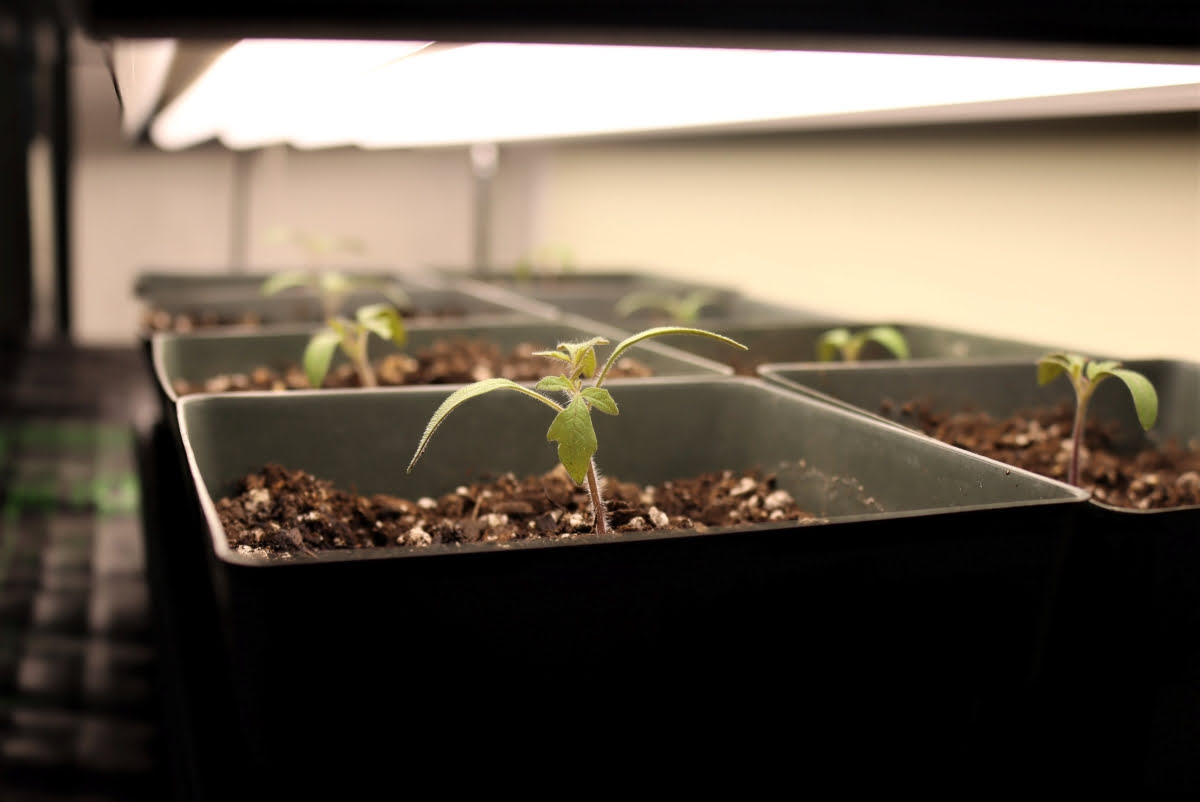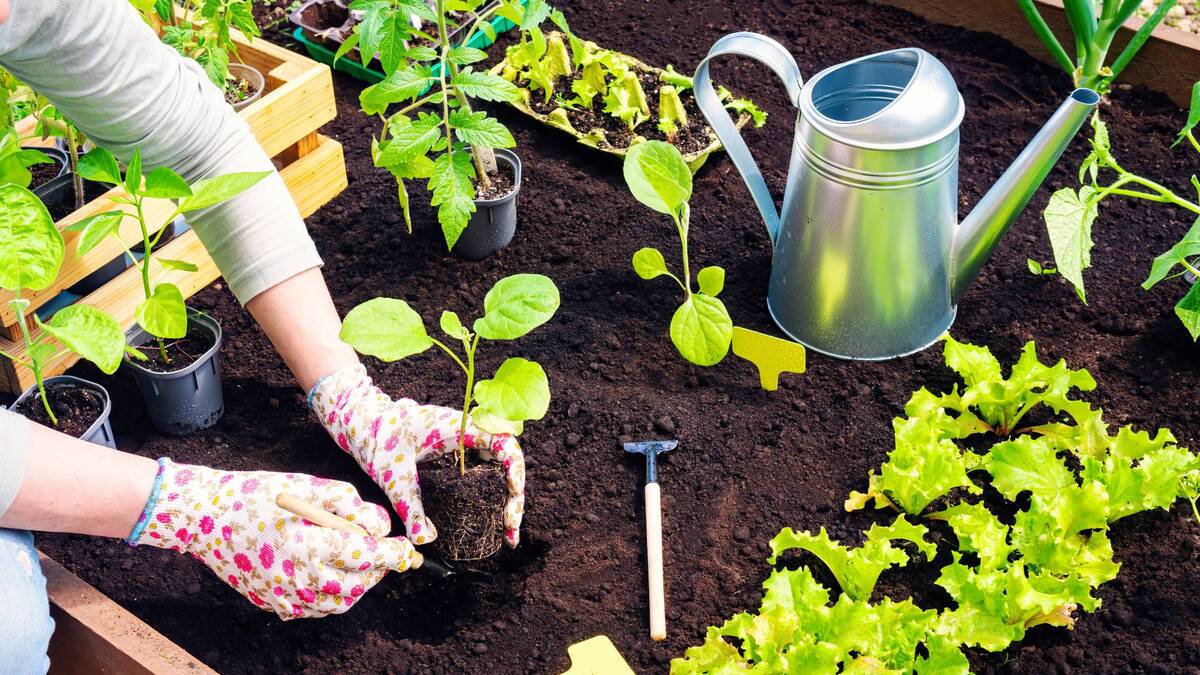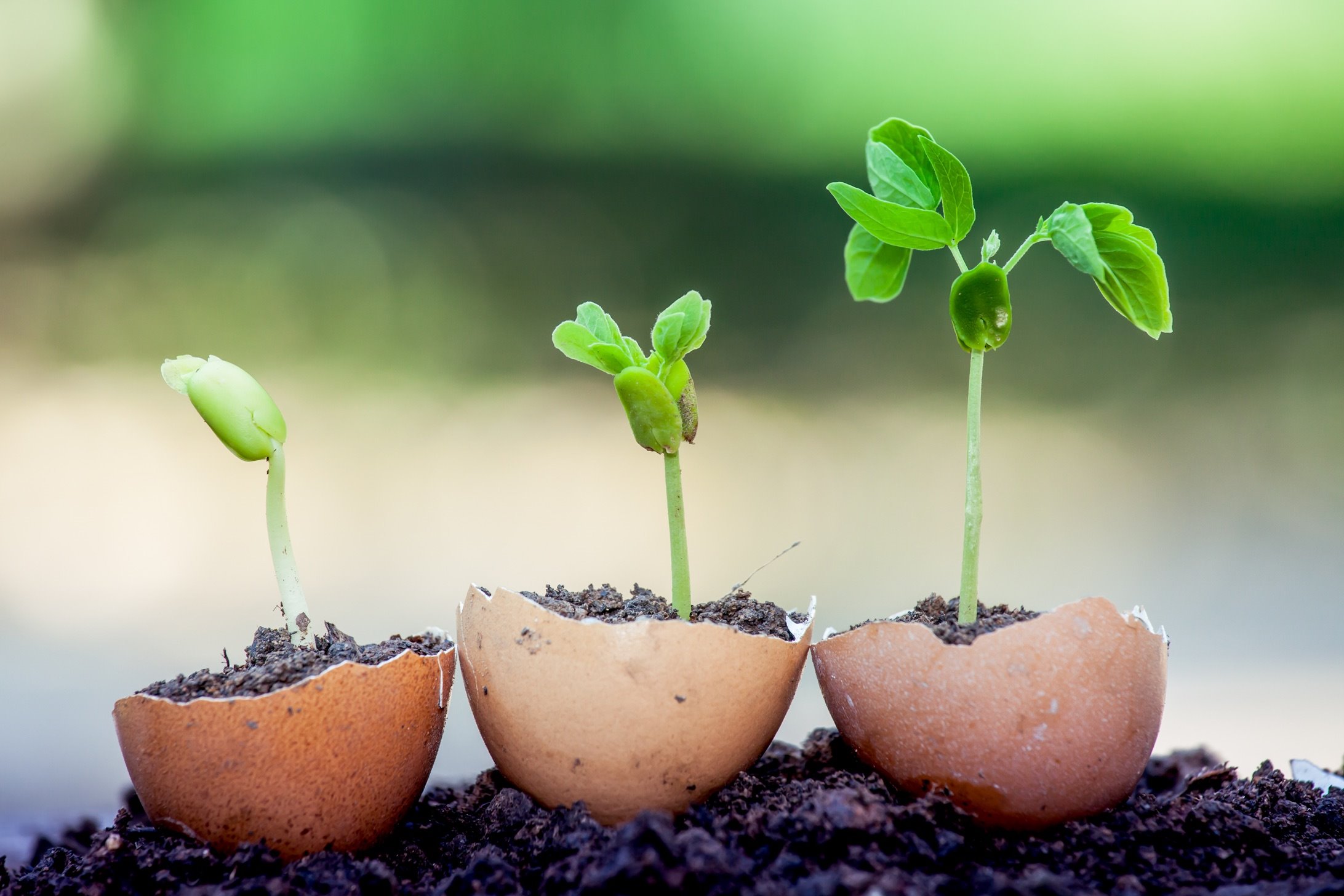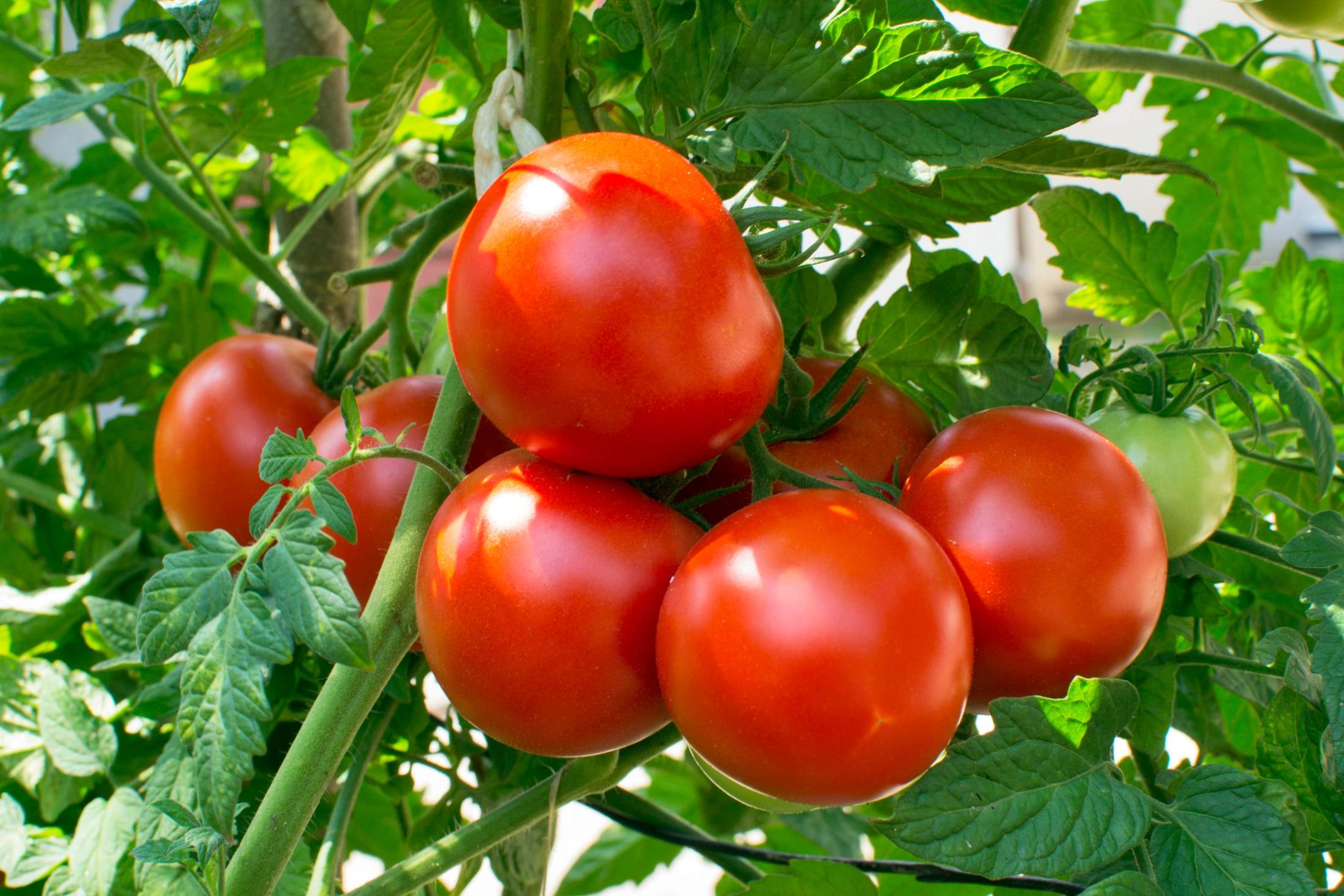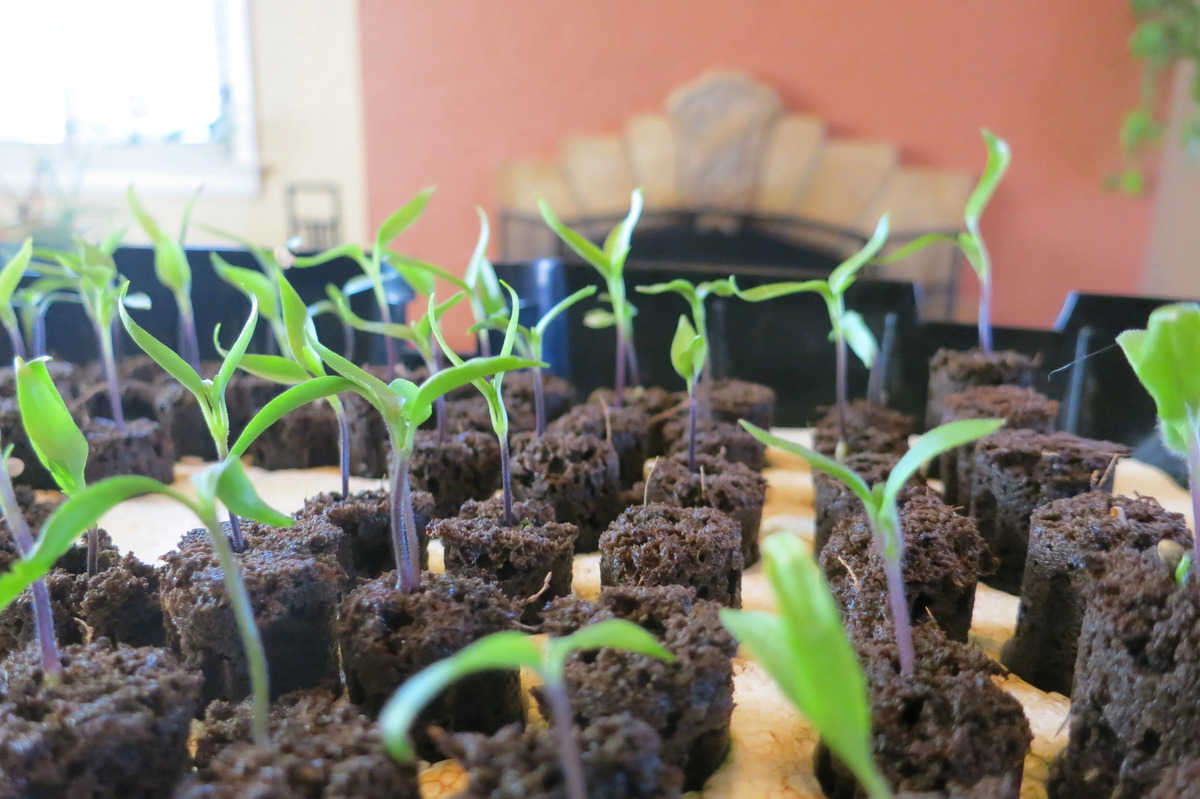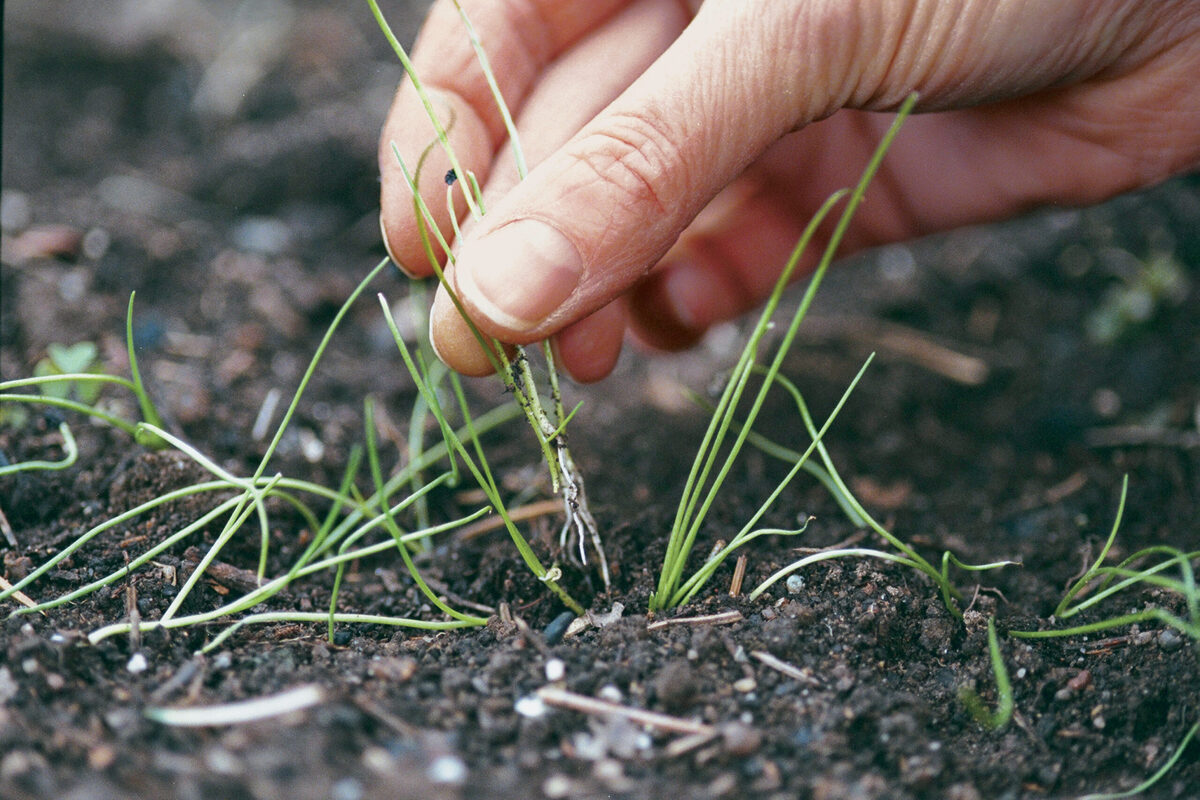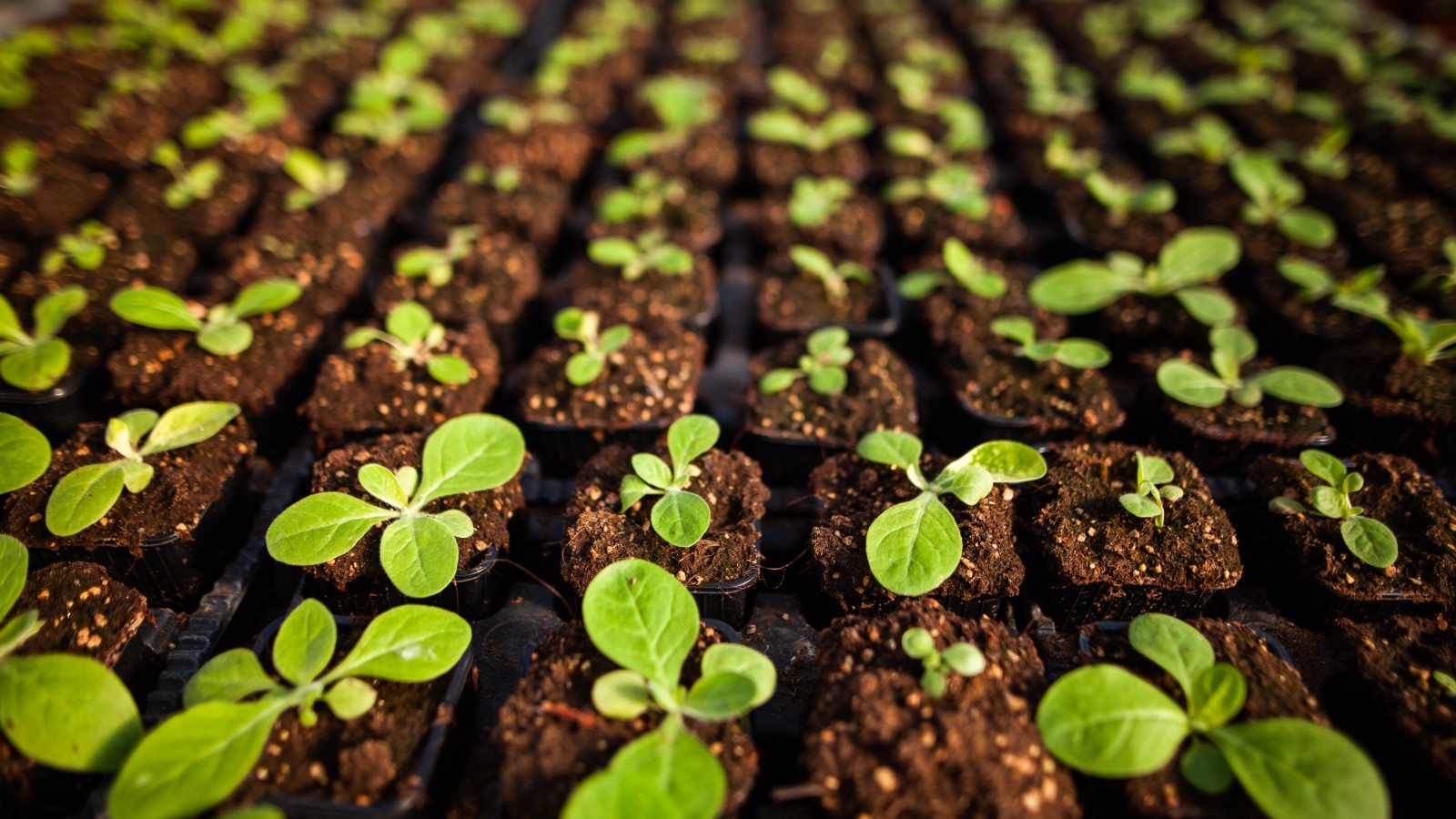Home>Types of Gardening>Edible Gardening>When To Put Seedlings Under Light
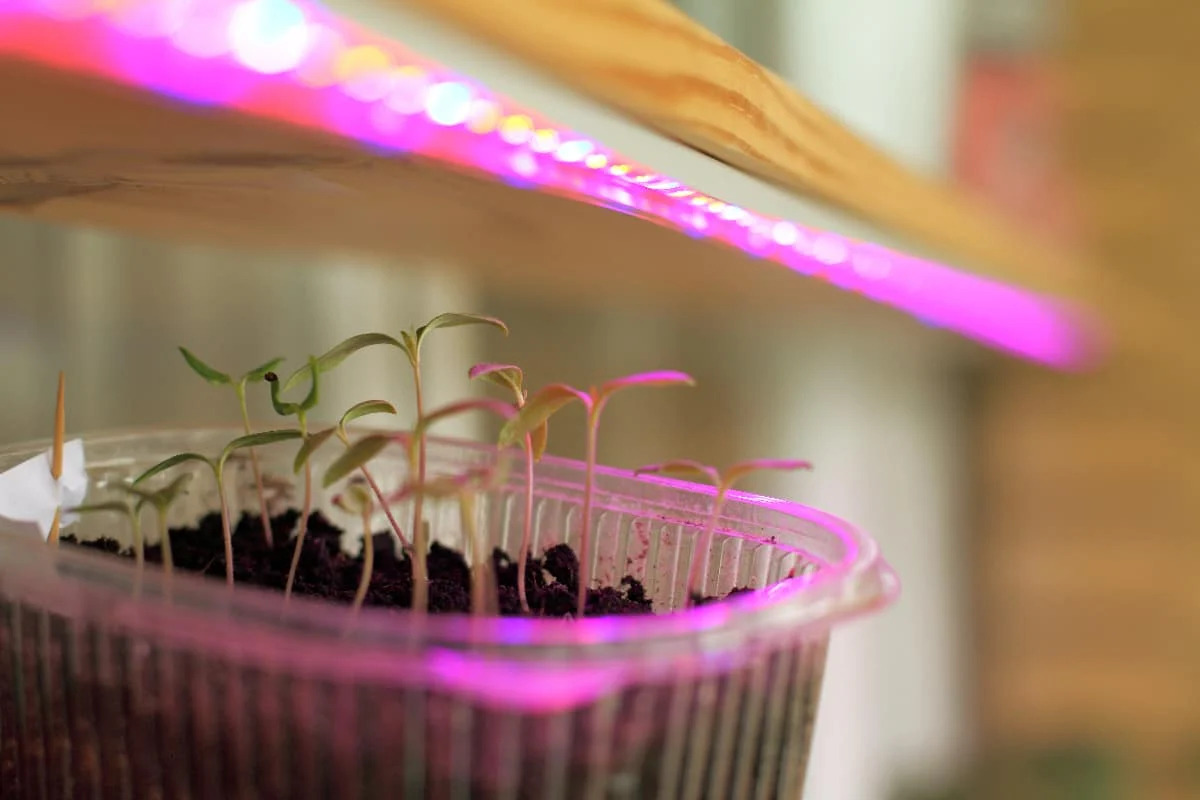

Edible Gardening
When To Put Seedlings Under Light
Modified: January 22, 2024
Learn when to put seedlings under light in your edible gardening journey. Discover the optimal time for providing artificial light to promote healthy growth and maximize your harvest.
(Many of the links in this article redirect to a specific reviewed product. Your purchase of these products through affiliate links helps to generate commission for Chicagolandgardening.com, at no extra cost. Learn more)
Table of Contents
Introduction
When it comes to cultivating healthy seedlings for your edible garden, providing adequate light is crucial for their growth and development. Light serves as an essential energy source for plants, fueling the process of photosynthesis, which converts light energy into chemical energy for plant growth. While natural sunlight is the optimal light source, there are times when supplementing with artificial light becomes necessary.
Seedlings, in particular, require sufficient light to develop strong stems and vibrant foliage. Without proper lighting, they can become leggy, weak, and prone to diseases. By understanding the importance of light for seedlings and knowing when to provide additional light, you can ensure their successful growth and increase your chances of a bountiful harvest.
In this article, we will explore the crucial role of light for seedling development, discuss important factors to consider, and provide guidance on when and how to use artificial light to support optimal growth. Whether you are a beginner gardener or an experienced enthusiast, this information will empower you to make informed decisions and maximize the success of your edible garden.
Importance of Light for Seedlings
Light is essential for the growth and development of seedlings. It plays a vital role in photosynthesis, the process by which plants convert light energy into chemical energy, allowing them to produce their own food. Here are some key reasons why light is important for seedlings:
- Energy Source: Light provides the energy that plants need to carry out photosynthesis. This energy is used to convert water and carbon dioxide into glucose and oxygen, enabling the plant to grow and produce essential nutrients.
- Leaf Development: Adequate light exposure stimulates the growth of leaves in seedlings. Leaves are responsible for capturing light energy and converting it into food through photosynthesis. With sufficient light, seedlings can develop a healthy canopy of leaves, ensuring they receive enough energy for growth.
- Stem Strength: Proper light exposure encourages strong stem development in seedlings. Lack of light can cause seedlings to become leggy, with weak, elongated stems. This can lead to instability and poor nutrient uptake. Adequate light levels help seedlings grow sturdy stems, ensuring they can support the weight of foliage and withstand environmental stressors.
- Photosynthetic Efficiency: Light directly influences the efficiency of photosynthesis. Seedlings that receive sufficient light produce more glucose, which fuels their growth. Inadequate light exposure can reduce photosynthetic rates, resulting in slower growth and weaker plants.
- Health and Disease Resistance: Strong, healthy seedlings are more resistant to pests and diseases. Light plays a crucial role in promoting overall plant health and immunity. Seedlings deprived of proper light conditions are more susceptible to pathogens and may experience stunted growth or yellowing leaves.
Understanding the importance of light for seedlings is the first step toward achieving successful growth. By providing adequate light, you can ensure your seedlings have the energy they need to thrive and develop into healthy plants.
Factors to Consider
When it comes to providing the right light conditions for seedlings, several factors should be taken into consideration. These factors will help you ensure that your seedlings receive the optimal light exposure for healthy growth. Here are some key factors to consider:
- Light Spectrum: Different wavelengths of light affect plant growth in various ways. While all plants need a combination of red and blue light, some may also benefit from other wavelengths, such as far-red or ultraviolet. Consider using full-spectrum lights that mimic natural sunlight to provide a balanced light spectrum.
- Light Intensity: The intensity of light is crucial for seedling growth. Each plant has specific light intensity requirements, which can vary depending on the stage of growth. Use a light meter or follow recommendations from reputable sources to determine the appropriate light intensity for your specific seedlings.
- Light Duration: Seedlings need a consistent and appropriate duration of light exposure. Most seedlings require around 12 to 16 hours of light per day. Make sure to provide uninterrupted darkness during their rest period to mimic natural day-night cycles.
- Light Positioning: The distance between the light source and the seedlings affects the light intensity they receive. Ensure that the light is positioned at the correct distance to prevent scorching or stretching of the seedlings. Follow the manufacturer’s guidelines or experiment with different heights to find the optimal distance.
- Temperature: Light fixtures emit heat, and excessive heat can damage or stress seedlings. Consider the temperature requirements of your seedlings and monitor the heat emitted by the light source. Provide proper ventilation and adjust the distance between the light and the seedlings to maintain the appropriate temperature range.
- Light Type: There are various types of lights available for seedlings, including fluorescent, LED, and high-intensity discharge (HID) lights. Each type has its advantages and considerations, such as energy efficiency, heat output, and lifespan. Research the different options and choose the light type that best suits your needs and budget.
By considering these factors, you can create an optimal lighting environment for your seedlings. Keep in mind that different plants may have specific light requirements, so it’s essential to do research and adjust the lighting setup accordingly.
Duration of Light Exposure
The duration of light exposure is a crucial factor in the growth and development of seedlings. It is important to provide seedlings with the right amount of light each day to ensure their optimal growth. Here are some key points to consider regarding the duration of light exposure for seedlings:
Seedling Stage: The duration of light exposure for seedlings varies depending on their stage of growth. Generally, seedlings require around 12 to 16 hours of light per day during their early growth stages. This extended light exposure helps promote healthy leaf development and photosynthesis, providing the energy needed for growth.
Consistency: Consistency is key when it comes to the duration of light exposure. Seedlings require a consistent light schedule to establish a proper growth rhythm. Aim to provide the same duration of light exposure each day, ideally in a 24-hour cycle. Consistent light patterns help prevent stress and promote healthy growth.
Dark Period: While seedlings require sufficient light, it is equally important to provide them with a period of darkness. Darkness allows seedlings to rest and facilitates essential physiological processes. During the dark period, seedlings can recuperate and allocate energy to root development and other growth processes. Most seedlings benefit from an uninterrupted dark period of approximately 8 hours.
Gradual Adjustments: When introducing seedlings to light, it is beneficial to gradually increase their light exposure rather than subjecting them to sudden, intense light. Start with a shorter duration of light exposure, gradually increasing it over a few days or weeks. This gradual adjustment helps seedlings adapt to the light and reduces the risk of stress or shock.
Monitoring and Adjustments: It’s important to closely monitor the growth and response of seedlings to the duration of light exposure. If seedlings show signs of stress, such as wilting or leggy growth, or if they are not growing at the desired pace, consider adjusting the duration of light exposure. Experiment with different durations to find the optimal light schedule for your specific seedlings.
By providing the appropriate duration of light exposure for your seedlings, you can support their healthy growth and development. Remember to maintain consistency, include a proper dark period, and make gradual adjustments as needed. Monitoring the seedlings closely will help you determine if any adjustments to the duration of light exposure are necessary.
Optimal Light Intensity
The intensity of light plays a crucial role in the growth and development of seedlings. Providing the optimal light intensity ensures that seedlings receive the right amount of light energy for photosynthesis and overall plant health. Here are some key considerations for achieving the optimal light intensity for your seedlings:
Measurement: Light intensity is typically measured in foot-candles (fc) or lux. A foot-candle is the measurement of light intensity at a specific distance from the light source, while lux is the metric equivalent. Use a light meter or a smartphone app with a light meter function to measure the light intensity.
Plant Requirements: Different plants have varying light intensity requirements. Some plants, such as leafy greens, can tolerate lower light intensities, while others, such as fruiting plants, require higher light intensities for optimal growth. Research the specific light intensity requirements of your seedlings or consult reliable gardening resources to ensure you provide the appropriate intensity.
Stage of Growth: Light intensity requirements may also vary depending on the stage of growth of your seedlings. Seedlings in their early growth stages, with delicate and sensitive leaves, generally require lower light intensity. As they mature and develop more robust foliage, they can withstand higher light intensities. Adjust the light intensity as the seedlings progress through different growth stages.
Distance from Light Source: The distance between the light source and the seedlings affects the light intensity received by the plants. As a general rule, the closer the light source is to the seedlings, the higher the light intensity. However, it is essential to strike a balance to avoid scorching or overheating the seedlings. Refer to the specific guidelines provided by the manufacturer or conduct experiments to determine the ideal distance for your light setup.
Light Output: Different types of lights have varying light output capabilities. LED lights, for example, are known for their efficiency and ability to provide high light output with lower energy consumption. Consider the light output of the source you are using and ensure it can deliver the required light intensity for your seedlings.
Adjustments: Regularly monitor the growth and response of your seedlings to the light intensity. If the seedlings appear leggy, stretched, or weak, it might be an indication that the light intensity is too low. Conversely, if the foliage shows signs of scorching or burning, it suggests that the light intensity is too high. Make necessary adjustments to maintain the optimal light intensity for healthy seedling growth.
Providing the optimal light intensity for your seedlings is essential for their overall health and development. By considering the specific requirements of your plants, monitoring their growth, and making adjustments as needed, you can ensure that your seedlings thrive under the right light conditions.
Types of Lights for Seedlings
When it comes to providing artificial light for seedlings, there are several types of lights to choose from. Each type has its advantages and considerations, including energy efficiency, heat output, and the specific light spectrum it emits. Here are some commonly used types of lights for seedlings:
Fluorescent Lights: Fluorescent lights, particularly T5 and T8 grow lights, are popular choices for seedlings. These lights are energy-efficient, produce less heat compared to other types, and are available in various spectrums suitable for different growth stages of plants. They are cost-effective and can be used in both small and large-scale gardening setups.
LED Grow Lights: LED (Light Emitting Diode) grow lights are becoming increasingly popular due to their energy efficiency and long lifespan. LED lights come in different spectrums, allowing growers to customize the lighting conditions for their seedlings. They produce little heat, making them a safe option for small spaces, and their compact size allows for easy installation.
High-Intensity Discharge (HID) Lights: HID lights, such as metal halide (MH) and high-pressure sodium (HPS) lights, are known for their high light output. These types of lights are suitable for large-scale indoor gardening or if you have a large number of seedlings. However, they can be more expensive to operate and generate more heat, requiring proper ventilation and cooling systems.
Full-Spectrum Lights: Full-spectrum lights are designed to mimic natural sunlight by emitting a broad range of wavelengths. They provide a balanced spectrum of light that is beneficial for seedling growth. Full-spectrum lights can be fluorescents, LEDs, or other light types, and they are a good choice if you want to provide your seedlings with a light source that closely resembles natural sunlight.
Incandescent Lights: Incandescent lights are not the most efficient option for seedlings due to their high energy consumption and low light intensity. However, they can be used as supplementary lights or for specific applications where a specific spectrum is required. Keep in mind that incandescent lights tend to generate more heat, so use caution when using them near seedlings.
When choosing a type of light for your seedlings, consider factors such as energy efficiency, light intensity, light spectrum, and cost. Research the specific light requirements of your seedlings and select the type that best suits your needs, budget, and available space.
When to Start Using Lights
The timing of when to start using lights for your seedlings depends on various factors, including the specific plants you are growing, your location, and the natural light conditions available. Here are some guidelines to help you determine when to start using lights:
Seedling Stage: It is generally recommended to start using lights for seedlings once they have germinated and developed their first set of true leaves. At this stage, the seedlings require more light than what natural light alone can provide to support their rapid growth.
Natural Light Availability: If you are growing seedlings during the winter months or in an area with limited natural light, you may need to start using lights earlier. Insufficient natural light can lead to leggy and weak seedlings. Assess the natural light conditions in your location and determine if supplemental lighting is necessary from the start.
Light Requirements of Seedlings: Different plants have varying light requirements. Some seedlings are more tolerant of low-light conditions, while others require higher light levels for optimal growth. Research the specific light requirements of the seedlings you are growing and start providing supplemental lighting when they reach that stage of development.
Duration of Indoor Growing: If you are exclusively growing seedlings indoors, it is advisable to start using lights as soon as the seedlings emerge. Indoor environments usually have lower light levels compared to outdoor conditions, so providing early artificial light helps ensure proper growth and development of your seedlings.
Watch for Signs: Observing the behavior and appearance of your seedlings can provide valuable insights. If you notice that your seedlings are stretching or leaning towards a light source, it is a clear indication that they are not receiving sufficient light. In such cases, it is advisable to start using lights immediately to rectify the situation.
Remember to adjust the intensity and duration of light exposure gradually to avoid shocking the seedlings. Start with a few hours of light per day and increase it gradually over a week or two until you reach the recommended duration for your specific seedlings.
By considering the stage of your seedlings, natural light availability, their specific light requirements, and monitoring their growth, you can determine the appropriate time to start using lights. Supplemental lighting will provide the additional light energy your seedlings need and help them grow strong and healthy.
Signs that Seedlings Need Light
Proper lighting is crucial for the healthy growth and development of seedlings. Without adequate light, seedlings can exhibit signs of stress and weakness. It is important to pay attention to the following signs that indicate your seedlings need additional light:
- Leggy Growth: Seedlings that do not receive enough light will often appear leggy, with thin and elongated stems. This is the plant’s way of reaching for more light in an attempt to maximize the energy they can absorb.
- Leaning or Stretching: If your seedlings lean towards a light source or stretch towards the nearest window, it is a strong indication that they are not receiving enough light. This is a survival mechanism as they try to position themselves for better light exposure.
- Pale or Yellowing Leaves: Insufficient light can cause the leaves of seedlings to become pale or yellow. This is because the chlorophyll production is reduced, leading to a nutrient deficiency. Pale or yellow leaves can also indicate poor photosynthesis and, consequently, stunted growth.
- Slow Growth: Seedlings lacking adequate light will experience slow or stunted growth. This is a result of reduced photosynthesis and limited energy production. Compared to healthy seedlings, they may appear smaller and fail to thrive despite the necessary care and attention.
- Falling Leaves: In some cases, seedlings without sufficient light may start to drop their leaves. This is a clear sign of stress and a desperate attempt by the plant to conserve energy. Falling leaves should be taken as a warning sign and an indicator to provide additional light promptly.
- Lack of Leaf Development: Without adequate light, seedlings may have underdeveloped or poorly formed leaves. Healthy leaves are crucial for capturing light energy, and their absence or abnormal growth can severely impact the plant’s ability to photosynthesize and grow.
It is important to closely monitor the behavior and appearance of your seedlings to catch these signs early. If you notice any of these indications, it is crucial to take action and provide supplemental light immediately to prevent further damage and promote healthy growth.
Remember, prevention is key. Being proactive and ensuring your seedlings receive sufficient light from the beginning will help prevent these signs from appearing in the first place. By providing optimal lighting conditions, you can set your seedlings up for success and ensure they grow into strong and vibrant plants.
How to Set Up Light for Seedlings
Setting up proper lighting for your seedlings is essential for their healthy growth and development. Here are steps to follow when installing and arranging lights for your seedlings:
- Choose the Right Light Fixture: Select a light fixture that suits your needs and budget. Depending on the size of your seedlings and the number of plants, you can choose from fluorescent, LED, or high-intensity discharge (HID) lights. Consider factors such as light spectrum, energy efficiency, and heat output.
- Determine Light Placement: Position the lights directly above the seedlings or slightly to the side. This ensures even light distribution and minimizes the risk of shadowing. Adjust the height of the lights to maintain the recommended distance from the seedlings, typically around 2-4 inches above the top of the plants.
- Set Up Light Timer: To maintain consistent light exposure, use a light timer to automate the on/off cycles. Most seedlings require around 12-16 hours of light per day. Set the timer to provide this duration of light, taking into account any additional natural light they may receive.
- Consider Light Reflectors: If using fluorescent or HID lights, consider using reflective materials, such as aluminum foil or reflective panels, to increase light efficiency. Place these materials around the light fixtures to reflect light back onto the seedlings and enhance their exposure to light.
- Monitor Light Intensity: Use a light meter to measure the light intensity at plant height. Adjust the distance between the light source and the seedlings accordingly to achieve the desired light intensity. Aim to provide the recommended light levels specific to your seedlings.
- Provide Proper Ventilation: Lights can generate heat, which may affect the temperature around your seedlings. Ensure proper ventilation to prevent excessive heat buildup. Use fans to promote air circulation and maintain the ideal temperature range for your seedlings.
- Rotate the Seedlings: To ensure even light distribution and prevent seedlings from leaning towards the light source, rotate the trays or pots regularly. This practice encourages uniform growth and helps seedlings develop stronger stems.
- Regularly Inspect and Maintain the Lights: Check the light fixtures regularly to ensure they are functioning properly and free from any damage. Replace any burnt-out bulbs or faulty components promptly to maintain consistent and effective light exposure for your seedlings.
By following these steps, you can ensure that your seedlings receive optimal lighting conditions for their growth. Remember to adjust the light height, monitor light intensity, and provide proper ventilation to maintain a healthy and conducive environment for your seedlings.
Common Mistakes to Avoid
When it comes to providing light for seedlings, there are some common mistakes that gardeners make. By being aware of these mistakes, you can avoid them and ensure the healthy growth of your seedlings. Here are some common mistakes to avoid:
- Inadequate Light Duration: One of the most common mistakes is not providing enough light duration for seedlings. It is essential to ensure that seedlings receive 12-16 hours of consistent light per day. Inconsistent or insufficient light exposure can lead to weak and leggy growth.
- Insufficient Light Intensity: Another mistake is not providing enough light intensity. Seedlings require the appropriate light intensity to promote proper photosynthesis and healthy growth. Insufficient light intensity can cause seedlings to become stretched, weak, and prone to disease.
- Improper Light Distance: Placing the light source too far away or too close to the seedlings can have negative consequences. If the light source is too far, seedlings may stretch and become leggy. On the other hand, if the light source is too close, it can lead to heat stress or leaf burn. Strike a balance by adjusting the light distance based on the specific light requirements of your seedlings.
- Ignoring Light Spectrum: Each plant species has different light spectrum requirements for optimal growth. Neglecting to provide the right light spectrum can hinder seedling development. Research the specific light spectrum needs of your seedlings and choose a light source that provides the appropriate spectrum for their growth stage.
- Not Allowing for Dark Period: Seedlings need a period of darkness to rest and recover. Some gardeners make the mistake of leaving the lights on 24/7. Remember to provide a dark period of around 8 hours per day to mimic natural day-night cycles. Darkness allows for important physiological processes and helps prevent stress in seedlings.
- Neglecting Temperature Considerations: Light fixtures can generate heat, which can impact seedling growth. Neglecting temperature considerations can lead to overheating and stress. Monitor the temperature and provide proper ventilation to maintain an ideal range for your seedlings.
- Ignoring Seedling Reaction: Every seedling is unique, and their reaction to light may vary. It is important to closely monitor your seedlings’ response and adjust lighting conditions accordingly. If you notice signs of stress, such as wilting or yellowing leaves, it may be an indication that the light conditions need to be adjusted.
- Not Maintaining Lights: Proper maintenance of light fixtures is crucial for their effectiveness. Neglecting regular inspections and failing to replace broken or burnt-out bulbs can result in inconsistent light exposure and poor growth. Regularly inspect and maintain your lights to ensure they are functioning optimally.
By avoiding these common mistakes, you can provide the optimal light conditions for your seedlings. Remember to provide the right light duration, intensity, and spectrum, adjust the distance, allow for a dark period, consider temperature conditions, monitor seedling reaction, and maintain the lights properly. These practices will help ensure strong and healthy growth in your seedlings.
Conclusion
Proper lighting is essential for the successful growth of seedlings in your edible garden. Understanding the importance of light and knowing when and how to provide supplemental light can make a significant difference in the health and vigor of your seedlings. By considering factors such as light spectrum, intensity, duration, and distance, you can create an optimal lighting environment for your seedlings.
Signs that indicate seedlings need additional light include leggy growth, leaning or stretching towards light, pale or yellowing leaves, slow growth, falling leaves, and lack of leaf development. Recognizing these signs early on allows you to take prompt action and provide the necessary light for healthy seedling development.
Setting up lights for seedlings involves choosing the right light fixture, determining proper light placement, using a light timer, considering light reflectors, monitoring light intensity, providing ventilation, rotating seedlings, and regularly inspecting and maintaining the lights. By following these steps, you can ensure that your seedlings receive the optimal lighting conditions they need to thrive.
Avoiding common mistakes such as inadequate light duration, insufficient light intensity, improper light distance, ignoring light spectrum, not allowing for a dark period, neglecting temperature considerations, ignoring seedling reactions, and not maintaining lights will help create an ideal light environment for your seedlings.
Remember, successful seedling growth is a combination of providing the right environmental conditions, including light, water, and nutrients, and giving your plants the care and attention they need. With proper lighting, you can set your seedlings on a path to becoming healthy, robust plants that will eventually provide you with a bountiful harvest in your edible garden.
